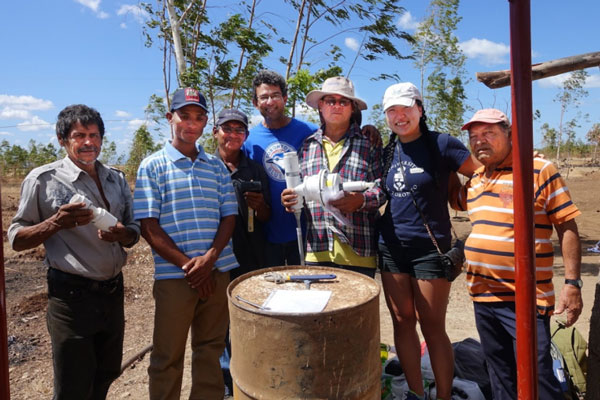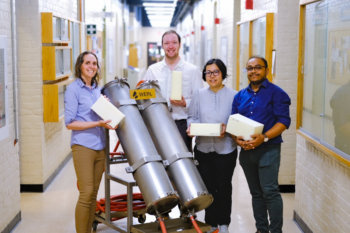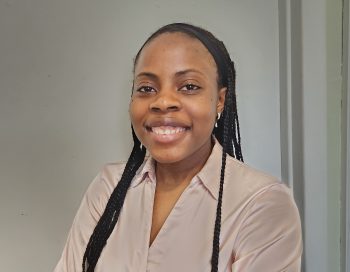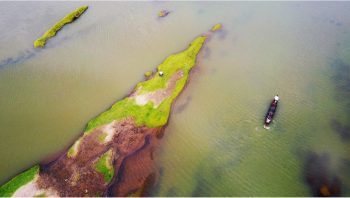Anna Jiang (MIE MASc candidate) cannot show off her thesis project because it is half-buried in the soil of Pedro Arauz, Nicaragua.
“I can show you the graveyard of things that didn’t work,” she says. “It took countless tries to arrive at my final design.”
Jiang, who is supervised by Professor Amy Bilton (MIE), aims to help farmers worldwide make better use of the little water they have for irrigation. Her device senses when the soil requires water and regulates the flow accordingly, all without the use of electricity.
“I wanted to apply my engineering skills to real-life challenges that could help create global equality,” says Jiang. “Using smart scheduling to save water could help in an area like Pedro Arauz, where the dry season lasts for eight months.”
The device is based on a tool used in the developed world, known as a tensiometer — a long, water-filled tube with a ceramic tip. When staked in dry soil, various physical and chemical forces draw water through tiny pores in the tip. That creates a negative pressure within the tube which, when connected to a pressure gauge, moves a needle to indicate how dry or wet the soil is.
Jiang’s insight was that the same negative pressure could be used to control a valve that would turn an irrigation system on or off. Her electricity-free controller uses a rubber membrane to operate a piston, providing water only when the soil is dry enough to require it.

In developed countries, farmers typically use electronic timers to control their irrigation systems. But because timers don’t take account of how much irrigation crops actually need, they can waste a lot of water. Controllers like Jiang’s could improve efficiency, lower costs and make farms more resilient in the face of drought.
Currently in Pedro Arauz, most farmers don’t have any irrigation at all. For the past two years, Bilton has been working with non-profit organizations Winds of Change and Seeds of Learning to build a wind pump for the community that could provide cost-effective irrigation using locally-sourced raw materials and labour.
Once wind pumps can provide water, the next challenge will be to regulate its flow. That’s where Jiang’s controller comes in.
“How do you get farmers who haven’t used irrigation before to save water?” she asks. “You can go in and teach them, but that takes a lot of resources. This controller takes a lot of the guesswork out of the equation.”
In February, Jiang travelled to Pedro Arauz along with Bilton and several other students. While the rest of the team checked up on a wind pump they had previously built, Jiang demonstrated her irrigation controller for local farmers.
“Trips to communities like Pedro Arauz are essential for people looking to engage in global engineering,” says Bilton. “It’s really important to be able to understand the context and be able to work with the potential end user of your technology. If you don’t do this, it’s easy to overlook important factors, which can render your product unusable.”
Jiang took full advantage of the opportunity. “I took the whole thing apart, put it on top of the barrel, and asked them to try putting it back together,” she says. “If anything were to break, they’d know exactly what to do.”
Jiang also travelled to a local hardware store and confirmed that it stocked the parts — primarily PVC tubing and rubber membranes — needed to repair and maintain the device. She even left a controller behind in order to gather data that will inform further improvements to the device’s design.

Bilton says there is still a long way to go before the water controller can be deployed. “Right now, we are developing models to really understand what’s going on and then validating them experimentally,” she says. “We’ll then use these to optimize the design for particular crops and evaluate the impact of the device on crop yields and water usage. We’ll be doing consultation with the community throughout the process.”
By that point, Jiang will likely have graduated, but the experiences she’s had in Pedro Arauz have inspired her to continue working in the field of international development. “In Nicaragua, I learned that that I would work well in field conditions,” she says. “I’m really excited to do more of that.”
Jiang’s passive water regulator is just one example of the ways that U of T Engineering research is generating water solutions for people around the world. Bilton and her colleagues in the Institute for Water Innovation are engaged in a number of projects, including: advanced technologies for drinking water treatment, techniques to help mining companies improve water management, and using microbes to break down chemical contaminants in water and soil.



